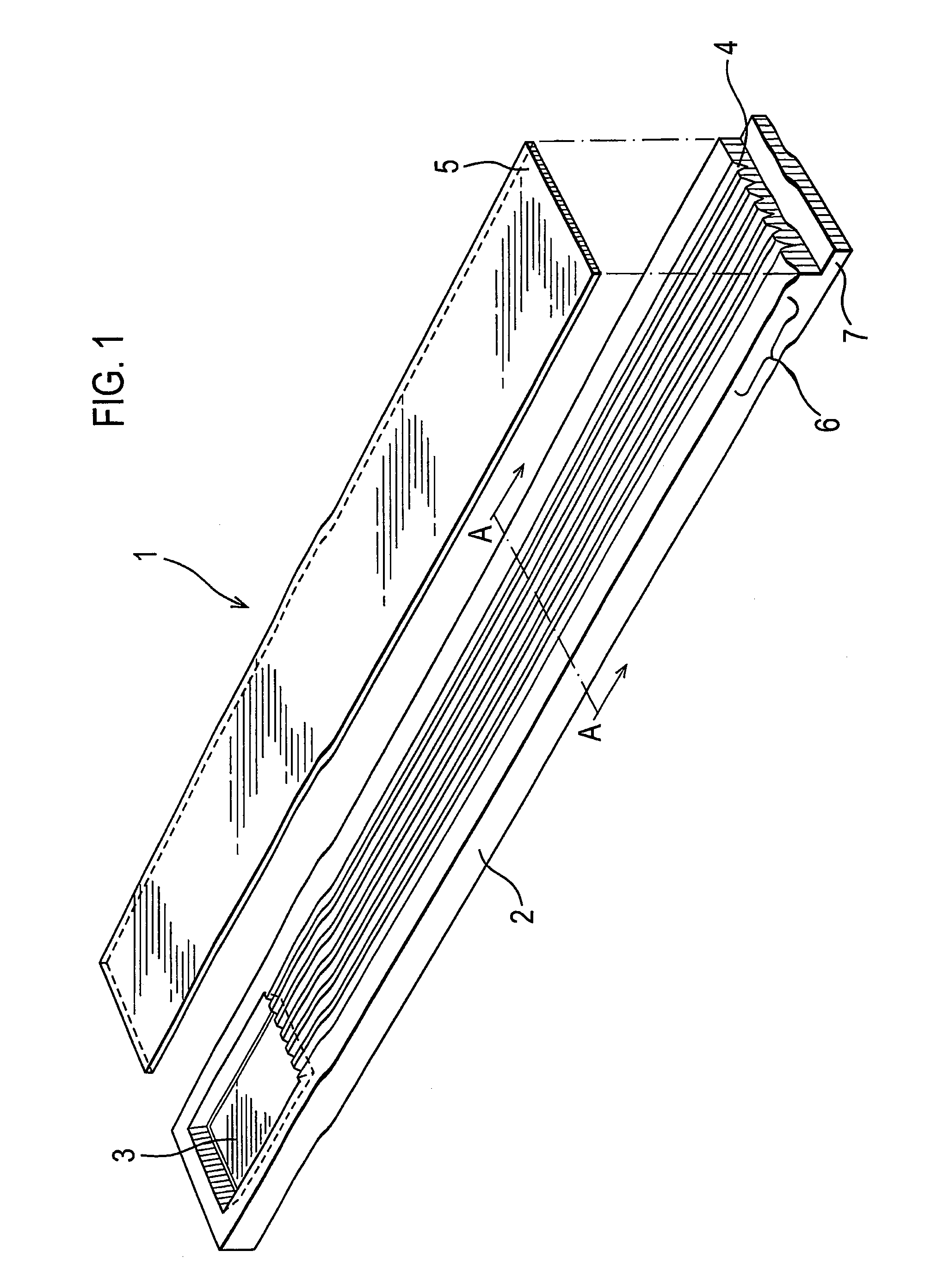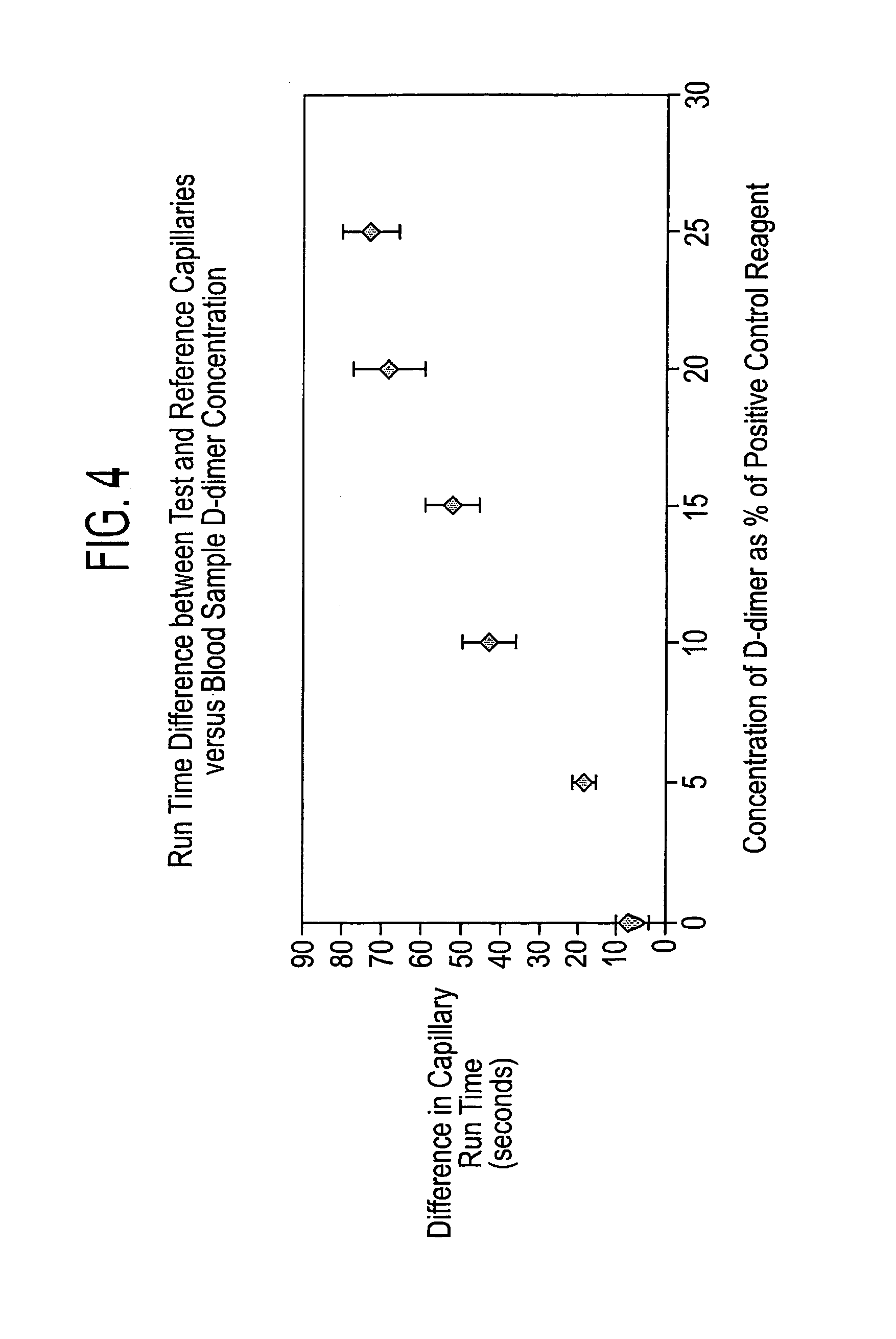Agglutination reaction system
a reaction system and agglutination technology, applied in the field of agglutination reaction system, can solve the problems of human error in such a test, complex detection system, and therefore high cost, and achieve the effect of reducing the cost of providing the system, and reducing the possibility of human error
- Summary
- Abstract
- Description
- Claims
- Application Information
AI Technical Summary
Benefits of technology
Problems solved by technology
Method used
Image
Examples
Embodiment Construction
[0067]The test device 1 illustrated in FIG. 1 comprises a moulded, light transparent (clear) body 2 having upper and lower major surfaces. The upper surface is moulded towards one end thereof with a sample well 3 from which extend in parallel a plurality of V-shaped pathways 4 also moulded in the upper surface. As shown in FIG. 2, each such pathways 4 has an apical angle of 60° with each side (as viewed in section) being of equal length, preferably in the range of 0.1-1.3 mm. The pathways 4 are intended to provide two sides of a triangular capillary pathway that is completed by a cover sheet 5 which is adhesively bonded to the body 2. This cover sheet may, for example, be a polyester membrane and is bonded to the body 2 by means of an adhesive of the type described more fully above. With the cover sheet in position, blood introduced into the sample well 3 is able to flow (by capillary action) towards the downstream ends of the capillary pathways.
[0068]Body 2 may be of a hydrophobic ...
PUM
| Property | Measurement | Unit |
|---|---|---|
| pH | aaaaa | aaaaa |
| length | aaaaa | aaaaa |
| length | aaaaa | aaaaa |
Abstract
Description
Claims
Application Information
 Login to View More
Login to View More - R&D
- Intellectual Property
- Life Sciences
- Materials
- Tech Scout
- Unparalleled Data Quality
- Higher Quality Content
- 60% Fewer Hallucinations
Browse by: Latest US Patents, China's latest patents, Technical Efficacy Thesaurus, Application Domain, Technology Topic, Popular Technical Reports.
© 2025 PatSnap. All rights reserved.Legal|Privacy policy|Modern Slavery Act Transparency Statement|Sitemap|About US| Contact US: help@patsnap.com



